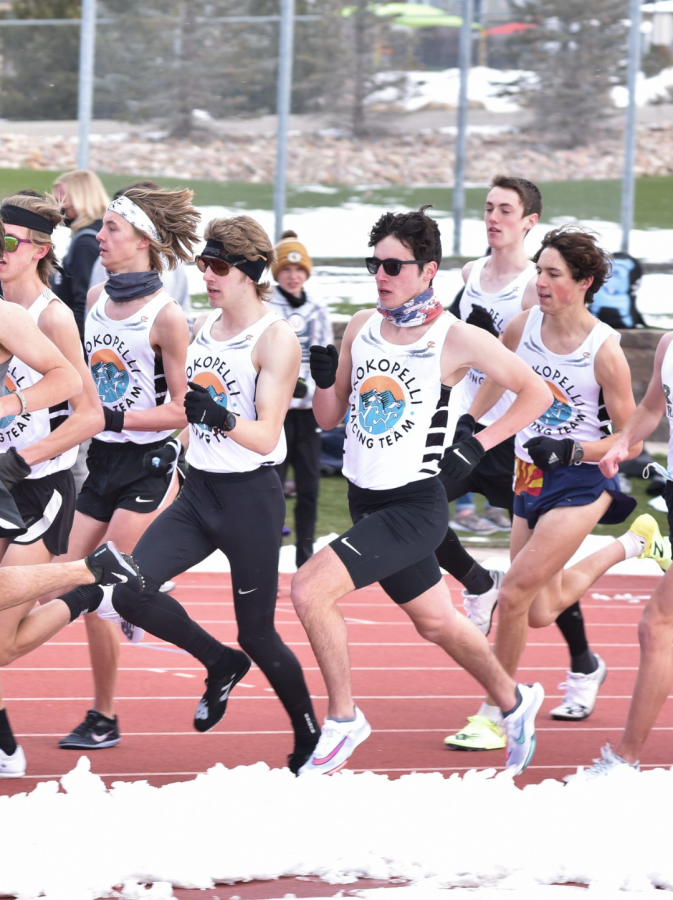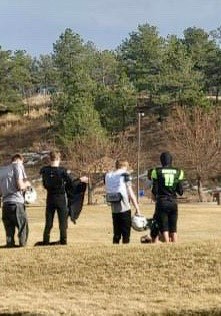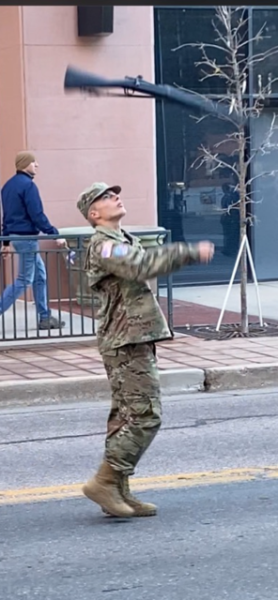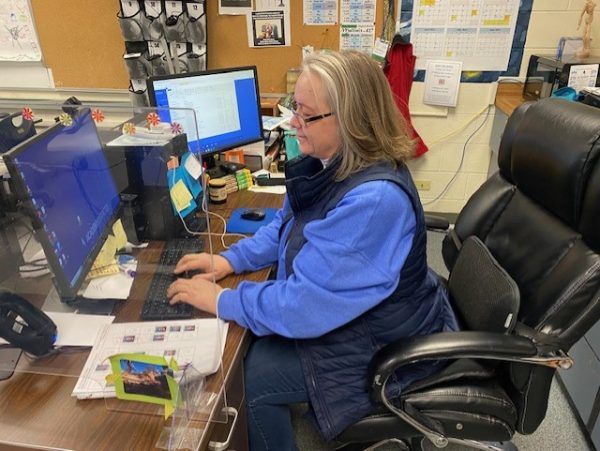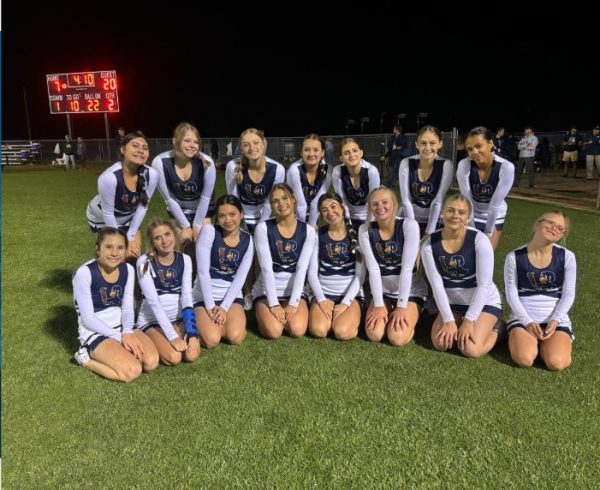58 Tips For Running Success
What’s up?! I’m Alex Maline, I’m a senior at Air Academy High School, I’ve been a year-round competitive club swimmer for 11 years and started running in 8th Grade. I stuck with cross country through high school and decided during my junior year that I wanted to run in college. Something happened and I changed from identifying myself as a swimmer to calling myself a runner, now I am going to run NCAA Division 2 cross country and track at Colorado School of Mines. I am super stoked for college and what my running career holds (hopefully beating up on UCCS on the track)! I fall in love with it more and more every day.
Howdy!! I’m Drew Braden, a senior at AAHS and this is my first article on the Jetstream Journal as a guest writer. I have been running for the last 6 years. I love racing the 400m, the 800m, and the 1600m. I’m going to run NCAA Division 2 cross country and track for the University of Colorado at Colorado Springs. I as well look forward to college and where my running career will take me (hopefully shaming Colorado School of Mines on the track)!
- A watch is a must. It doesn’t have to be a GPS watch, traditional timer, or Chrono watches work. This will keep your training uniform and let you know how you are progressing.
- If you are more serious about your training, a Garmin, TomTom, Fitbit, Samsung, apple watch, or any other GPS/ mileage tracking watch so you can really know what is going on with your body and training. Most runners use Garmins or apple watches because of the running-oriented user interface.
- Split shorts may look funny but at the end of the day they work best for range of motion and cooling off (half tights for the thick-thighed runners).
- For the colder seasons, invest in a nice pair of running gloves, a warm winter hat, fleece undershirts, nice warm leggings or pants, and dress a little warmer than you think you need to. Running cold not only is an awful experience but it can lead to injury or sickness. You will thank yourself for dressing adequately and having proper winter gear, especially in Colorado.
- Running with minimal layers (within legal boundaries) in the summer is highly recommended, you will be much cooler because when your body sweats to regulate temperature and the air you’re rushing through hits it, you will feel much better than when the sweat just sits or soaks into a shirt. Feeling free is what it’s all about.
- Sleep is very important. The sleep you get in the two nights of sleep leading up to the night before a race is actually more impactful than the sleep you get the actual night before a race.
- If you are running with a group of people and they all go silent even when you’re expecting a reply–don’t keep annoying them. It sounds simple but reading the room seems to not be a skill these days.
- Sometimes you gotta do what you gotta do–I think we all know what that means–but just be aware of your surroundings. The sudden physical activity starts the bowels moving unpredictably, so all runners go through it.
- Always have an extra water bottle, snack, seasonal clothing, roller, and spare shoes in your car or at the ready.
- Body glide or arm and hammer anti-chafing sticks are both good products to decrease chafing- it happens to everyone, don’t be ashamed to need to use it.

Senior Alex Maline with the coyote skull he found on the Santa Fe Trail during fall cross country in 2020. - Ice baths or putting your legs up vertically on the wall both flush out lactic acid build up in your legs, keeping you healthy, fresh legged, and is a great thing to do weekly.
- STRETCH STRETCH STRETCH (it can’t be stressed enough)
- It may seem superficial, but buy a pair or two Goodr sunglasses, they’re cheap, incredibly durable, work amazingly, and are built with high quality specifically for running. Additionally, their marketing is hilarious and they have any color and style anyone could ever want.
- Never hesitate to take a day off if you’re feeling tired. It can help keep you fresh and motivated. If training is stressing you out or your body is telling you something doesn’t feel right, don’t run yourself into the ground (pun intended), take the day off to take care of yourself. For the most part- one day without training to help the mind or muscles may help more than pushing through and causing injury or burning out.
- Keep a log of your daily mileage and workouts along with how you felt and things to improve. This keeps your head in the game for training and can help you if you decide something needs to change for health reasons or performance reasons.
- If you are going to increase your weekly mileage- do it very gradually (only one or two miles per run, and then hold the mileage there for a week, and then continue on) each week and hydrate extra to account for the increased demand on your body.
- Running overkill mileage will not help performance if you never do speed workouts.
- For serious endurance athletes, test your blood for iron/ferritin levels, this is will tell how much oxygen your blood can carry, meaning you need to either take an iron supplement or eat more red meat and spinach to bring up the iron levels if they come back low.
- For hot, cold, or mild weather always hydrate! Your body will thank you on those final reps.
- Carbs, protein, and fat all help refuel your body for those runs.
- Invest in a good muscle roller or massage gun; you’d be surprised where muscle knots can hide.
- Don’t compare yourself to other people, focus on you boo.
- For some people, the Strava running app, which shows the runs and stats of other runners is an exciting thing. However, it can be unhealthy to become absorbed with this as it makes you train differently for other’s appraise.
- Eat bland carbs and simple sugars well in advance of running or racing. Simple sugars and more bland foods digest quickly and are what the body needs.
- Whether you race in local or serious 5k’s 10k’s or any race for that matter, have a plan and prepare your gear the night before
- When the going gets tough during a run or race, relax but keep pushing on (unless your body is screaming at you that things are going very wrong), and focus on breathing deeply and take things in small increments at a time. No pain, no gain.
- In a workout, add a little sugary electrolyte mix to your drink, such as Scratch or Gatorade diluted with water.
- Visualize those races. Put yourself in the setting mentally; envision how you plan to execute the race strategy. Confidence is key, when you feel like a stud you race like a stud or worst case scenario you gave it your best effort, and sometimes that’s all that can be done.
- “Prior planning prevents piss poor performance”- Lisa Rainsberger [said by swim coach Tom Belco originally].
- Obviously have a good relationship with your coach; it can lead you to very special opportunities and prosperity in your athletic career.
- Keep your hard days hard and your recovery days easy. You can’t redline your body 24/7. We aren’t Ford GT’s.
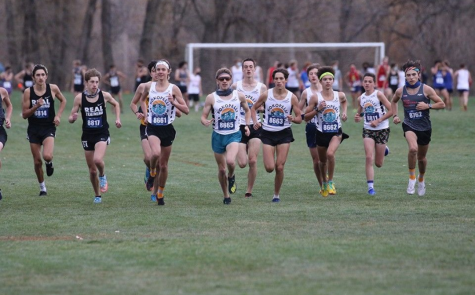
Kokopelli Racing team at the front of the pack at a post-season 5k race at El Pomar Sports complex. - Run in places you’ll enjoy. Even if it’s a technical trail, slowing down every now and then to enjoy amazing views is a great way to stimulate the mind. Additionally, your body must recover via a recovery run keeping the heart rate steady in the 110-150 bpm range.
- Running is largely a mental game. Don’t defeat yourself if things get tough, chill out, and power through. Your mind’s uncontrolled negative thoughts can be your worst enemy and your own biggest limiting factor.
- Runners call their running shoes “trainers.” Find out which shoe works best for you. Stores like Colorado Running Company, Boulder Running Company, or Runners Roost will video your running form and give suggestions on the best shoe for you.
- Buy multiple pairs of the trainer you decide works best for you in case the shoe is discontinued, or out of stock.
- When your trainers hit about 300 miles or so, evaluate if the cushioning or tread is still good. If not, this can cause injury.
- It seems minute, but how tight your shoelaces are can make a massive difference in how you feel running and your comfort. It’s a personal preference but dialing in where you like your shoelaces in taught-ness can mean the difference of a few seconds in a race or a few extra miles in a long run.
- The best way to correct shin splints is to just rest, stop running for a couple of months or more depending on the severity and do ample leg stretching along with exercises for all of your hip muscles.
- For racing, whether on trails, tracks, or the road, you’ll need a pair of flats, spikes, or racing shoes. Go to a local running store and they will help you decide what may be the best option for a racing shoe based on your type of racing and training shoe.
- Running isn’t just about the legs or mind. Hit your core and arm muscles too; this makes you a better-rounded athlete and prevents injury.
- MORE CORE MORE CORE MORE CORE BABY
- Running with your dog is great and exciting for them. It really is heartwarming to see your dog’s tail wagging and a smile on their face the whole time. Dogs, just like people are meant to be active and explore.
- If you want to eat a prickly pear on your run, beware of the spikes. (Make sure they are as dark purple as possible and a little more firm than that of a ripe avocado).
- BRING BACK PASTA PARTIES!
- BRING BACK MOUSTACHES MULLETS AND 70’s SIDEBURNS.
- Shop at your local running store, chances are, they’ll give you a student discount for being a high schooler or college runner. Supporting local businesses is about the best thing you can do for your town.
- Beware of cyclists: there aren’t much bigger rivalries than the one between runners and bikers on the same trail. You’d be surprised how many bikers zoom by and don’t bother to alert you or angrily tell you to move.
- PROTEIN! Consume as much as you can after your run. Your body can only absorb about 24 grams within a few hours, but few recovery drinks like muscle milk, premier protein, or chocolate milk (the favorite of most athletes) or things like yogurt contain that much per serving.
- Sometimes caffeine is a great kick for a workout or race, just be sure to monitor your stomach and hydration. It also stimulates bowel movements, which is handy when you can time it right.
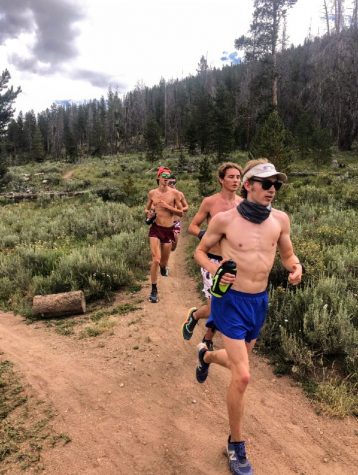
Kokopelli Racing Team runners at the descent of their run in Horseshoe Gulch Trail in Breckenridge, Colorado [front to back is AAHS senior Alex Maline, AAHS senior Ben Hodge, Cheyenne Mountain High School junior Jack Warmack and AAHS senior Drew Braden] - If you want to really make sure your bib (a number tag with a chip in it for ease of results) gets centered, place your race top on the ground and try not to pierce both layers of fabric with the safety pin.
- For Drew and I, we both think about racing cars or motorcycles when we are racing or running, but for others, their happy place may be different. It’s nice to keep your mind focused but not overthink about your race or how you’re feeling in times of maximum effort.
- If you can, partner up with one or more people. Having a chat with friends will make a 60+ minute long run fly by and be over before you know it. 60 minutes where you’re alone with your thoughts can make it a challenge to really get the most out of a run, when people are around you’re more likely to hold yourself more accountable. Additionally, it can be a great way to make new friends.
- If you run through an injury, you will almost always make it worse.
- Diversify the locations and routes you run to change it up and find cool trails with pretty views. It keeps running exciting.
- If it’s going to be a super hot day, grab a headlamp and go for a night run with a partner.
- Be patient for the Milesplit (a website and organization that tracks runners’ stats, logs data, and hosts races) results to upload. You will receive your earned ranking.
- When wearing a hat to keep the sun off of our skin, keep in mind that white hats reflect the heat and keep your head cooler than any other color of the hat. Visors are also a great way to avoid sunburns but keep your head cool or keep hair out of your face.
- Handheld water bottles may seem dorky, but it’s always better to have water and not need it than need it and not have it. Additionally, they usually have a pocket to hold toilet paper and your car key, which is almost always a struggle to figure out where to put while you run. Some put their key in the laces in their shoe, some safety pins it to the inside of their running shorts, and some running shorts have a specific key pocket but not every pocket is big enough to fit the key. Some people put their key somewhere hidden on the outside of their car too.
With some of this in mind, my hope is that someone out there somewhere gained a helpful tip and will apply it to their running knowledge. The world is open to exploration, nature is of course exquisite, and the best way to learn is by doing something yourself. So go ahead, throw on a visor and running shorts, put on your Goodr sunglasses, slap on that watch and your trainers, and go hit the trails. See what you can find out there and maybe in the process you can learn about yourself and enjoy how wonderful running can really be.

Howdy!! I'm Alex Maline, and this will be my second year on the Jetstream. This time around I am an editor and I'm excited to see how this year turns out!...



